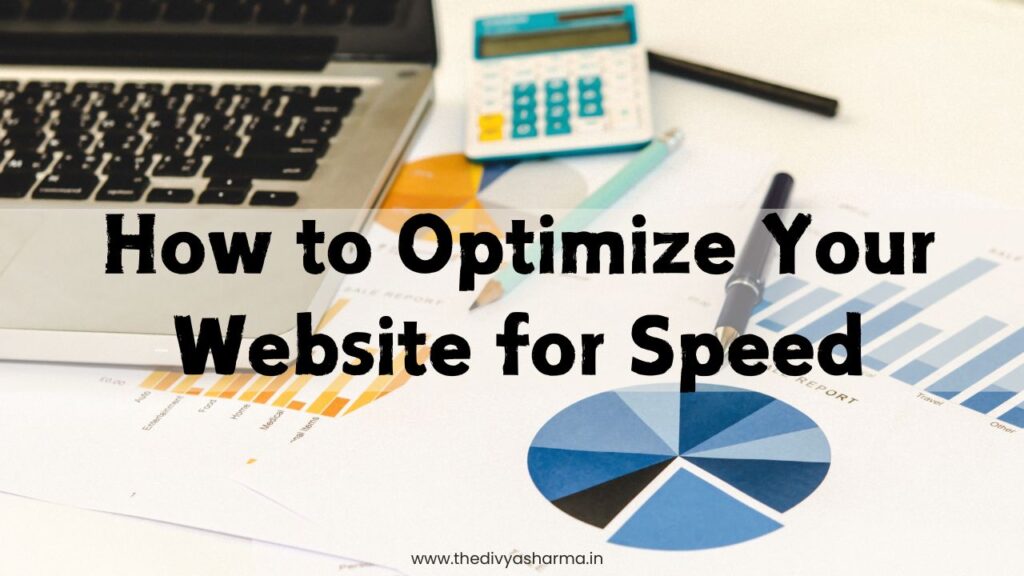
How to Optimize Your Website Speed
Table Of Content
Introduction
In today’s fast-paced digital world, website speed is crucial for retaining visitors, improving user experience, and boosting your search engine rankings. A slow website can frustrate users, leading to higher bounce rates and lower conversion rates. Here are some effective strategies to optimize your website for speed and ensure a smooth, fast-loading experience for your visitors.

1. Optimize Images
Large image files can significantly slow down your website. Here’s how to optimize them:
- Resize Images: Ensure your images are no larger than necessary. Use the appropriate dimensions for each image placement on your site.
- Compress Images: Use tools like TinyPNG or JPEG Optimizer to reduce the file size without compromising quality.
- Use WebP Format: WebP is a modern image format that provides superior compression and quality compared to traditional formats like JPEG and PNG.
2. Enable Browser Caching
Browser caching stores certain elements of your website in a user’s browser, allowing faster load times on subsequent visits.
- Set Expiry Headers: Define how long browsers should cache your files. For static files like images, CSS, and JavaScript, you can set a longer expiry time.
- Use a Caching Plugin: If you’re using WordPress, plugins like W3 Total Cache or WP Super Cache can simplify the process.
3. Minimize HTTP Requests
Each element on your webpage (images, scripts, stylesheets) requires an HTTP request. The more requests, the slower your page loads.
- Combine Files: Combine multiple CSS and JavaScript files into one to reduce the number of requests.
- Inline Small CSS and JavaScript: For small CSS and JavaScript, inline them directly into your HTML to eliminate additional requests.
4. Enable Compression
Compressing your files can reduce the amount of data that needs to be transferred to the user’s browser.
- Use Gzip Compression: Gzip compresses your web pages and stylesheets before sending them to the browser. Most web servers support Gzip, and it can be enabled via your server configuration or through a plugin if you’re using a CMS like WordPress.
5. Optimize CSS and JavaScript
Large CSS and JavaScript files can slow down your website.
- Minify CSS and JavaScript: Minification removes unnecessary characters (like spaces and comments) from your code, reducing file size. Tools like CSSNano and UglifyJS can help with this.
- Defer JavaScript Loading: By deferring JavaScript loading, you ensure that the script is only loaded after the main content of the page has loaded, improving perceived load time.
6. Use a Content Delivery Network (CDN)
A CDN distributes your website’s static files (like images, CSS, and JavaScript) across multiple servers around the world. This allows users to download files from the server closest to them, speeding up load times.
- Choose a Reliable CDN: Popular CDN providers include Cloudflare, Amazon CloudFront, and Akamai.
7. Reduce Server Response Time
Your server response time should be under 200ms according to Google.
- Use a Fast Web Host: Choose a web hosting provider known for speed and reliability.
- Optimize Your Database: If you’re using a CMS like WordPress, regularly clean up your database by deleting unnecessary data and optimizing database tables.
8. Implement Lazy Loading
Lazy loading defers the loading of images and other non-critical resources until they are needed (i.e., when they enter the viewport).
- Use a Lazy Loading Plugin: For WordPress, plugins like Lazy Load by WP Rocket or a3 Lazy Load can help implement this feature easily.
9. Monitor and Test Your Website Speed
Regularly test your website speed to identify and address issues promptly.
- Use Speed Testing Tools: Tools like Google PageSpeed Insights, GTmetrix, and Pingdom can provide insights into your website’s performance and suggest areas for improvement.
Conclusion
Optimizing your website for speed is not just about improving user experience; it’s also crucial for better search engine rankings and higher conversion rates. By implementing these strategies, you can ensure that your website loads quickly and efficiently, keeping your visitors engaged and satisfied. Start optimizing today and watch your website performance soar!
Leave a Comment
“Thank you for taking the time to learn more about me. If you’re looking to enhance your digital presence and achieve your marketing goals, I would love to connect and discuss how I can help your business grow.”
